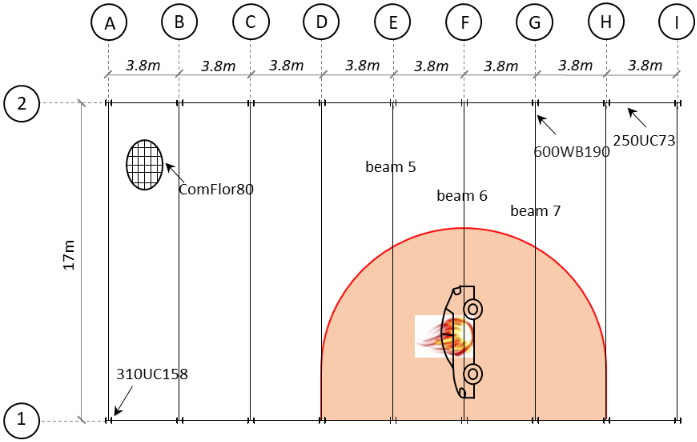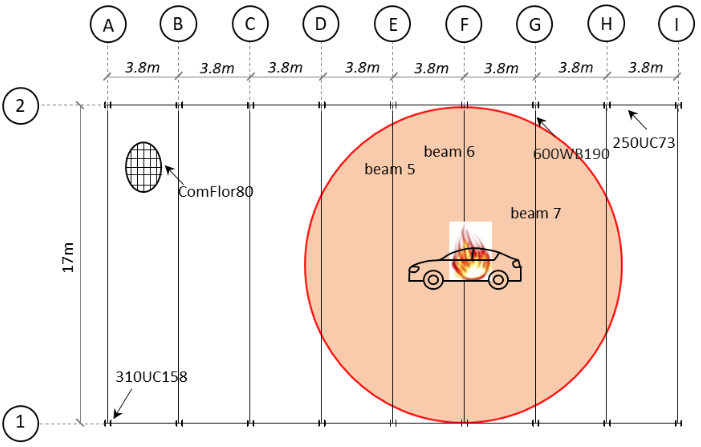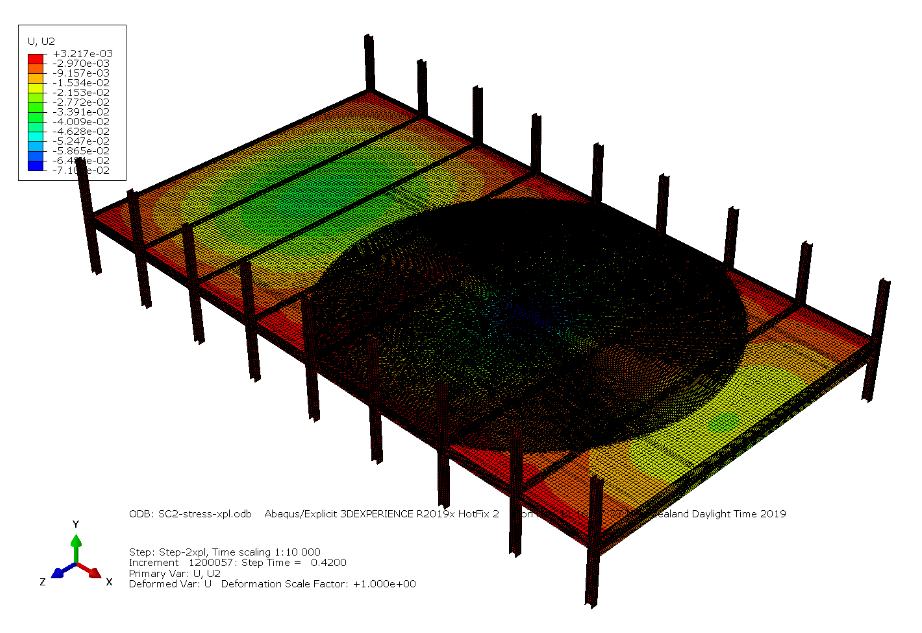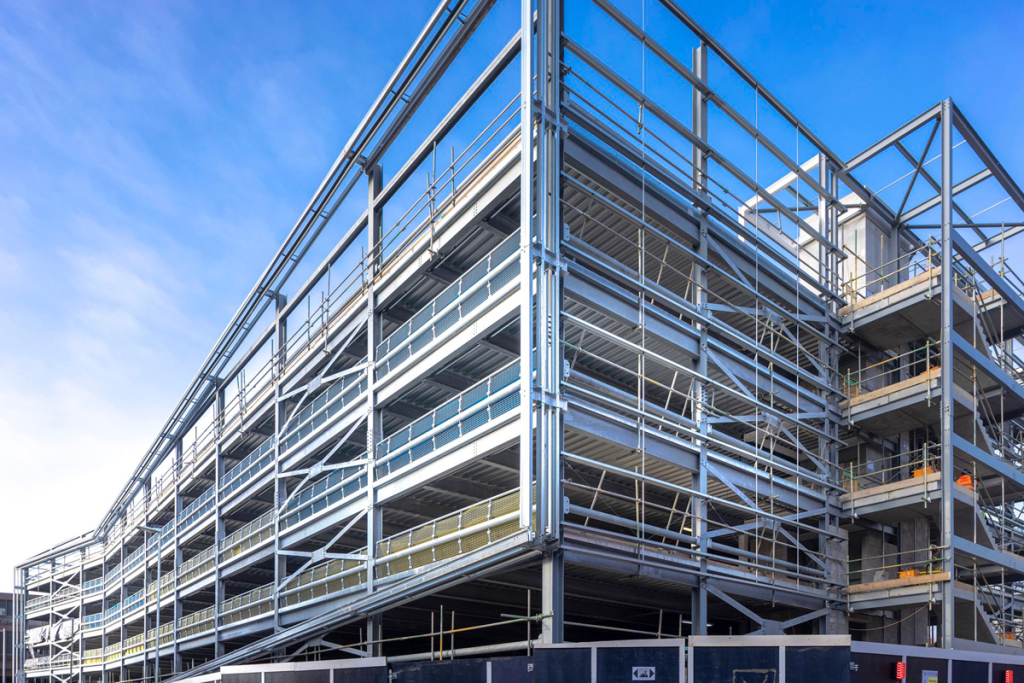Article written by – Fanqin Meng, Nandor Mago, and Kaveh Andisheh.
The New Zealand Building Code Compliance C/AS7 [1] requires that all structural components should achieve a minimum 30- or 60-minutes Fire Resistance Rating (FRR), depending on whether the building is sprinklered or unsprinklered, respectively. This requirement implies that all the structural steel components need to be protected with passive fire protection to reach the designed FRR. However, a statistical analysis conducted by Tohir et al. (2014) [2] revealed that 86% (344 out of 401 incidents) of vehicle fires were a single-vehicle fire. Applying a uniform fire scenario and using 30 or 60 minutes FRR may result in an overestimation of fire severity and excessive protection of the structural components in car park structures equipped with sprinkler systems.
The New Zealand Building Code Compliance C/AS7 [1] requires that all structural components should achieve a minimum 30- or 60-minutes Fire Resistance Rating (FRR), depending on whether the building is sprinklered or unsprinklered, respectively. This requirement implies that all the structural steel components need to be protected with passive fire protection to reach the designed FRR. However, a statistical analysis conducted by Tohir et al. (2014) [2] revealed that 86% (344 out of 401 incidents) of vehicle fires were a single-vehicle fire. Applying a uniform fire scenario and using 30 or 60 minutes FRR may result in an overestimation of fire severity and excessive protection of the structural components in car park structures equipped with sprinkler systems.


Figure 1. Plan view of the designed car park structure and fire scenarios.
It was observed that the structural beams underwent some plastic deformation in both fire scenarios during the simulation, however, none of them reached the failure limit of 1.2m [6]. Figure 2 illustrates the overall deformation pattern of the car park structure designed for fire scenario-2. The comparison between the simulation results and the design reveals that the fire location is a crucial factor determining the overall performance of the designed car park building structure, where the maximum vertical deflection increased from 0.077m under fire scenario-1 to 0.235m under fire scenario-2.

Figure 2. The overall deformation shape of designed car park structure under fire scenario-2.
The simulation results further confirmed the conclusion that the car park building, even with unprotected secondary beams, successfully withstands a localized vehicle fire without any structural component failures under both fire scenarios. This underscores the acceptability of the advanced steel-framed car park building design methodology proposed by Linus [3].
Reference:
[1] NZBC C/AS2, Acceptable Solution for Buildings Used for Buildings other than Risk Group SH. For New Zealand Building Code Clauses C1-C6 Protection from Fire. The Ministry of Business, Innovation and Employment, New Zealand
[2] Tohir, M.Z.M. and M. Spearpoint. (2014). Development of fire scenarios for car parking buildings using risk analysis. in Fire safety science-Proceedings of the eleventh international symposium. 2014.
[3] Lim, L. and M. Feeney. (2019). Structural fire design for steel framed carparks. 2019: Steel Construction New Zealand Incorporated.
[4] Nandor Mago. (2021). HERA Report R4-152. Validation of Structural Fire Design for Steel Framed Carparks. Auckland, New Zealand
[5] Meng, F., Mago, N., Andisheh, K., & Clifton, G. C. (2023). Numerical validation of structural fire design for steel framed car park buildings. Fire Safety Journal, 103819.
[6] EN 1363–1, Fire resistance tests, General requirements, 2012, BSI Standard.
For more information about the paper, please contact:
Fanqin Meng (Structural Fire Research Engineer) – Fmeng@hera.org.nz
Kaveh Andisheh (General Manager Structural Systems) – kaveh.andisheh@hera.org.nz
